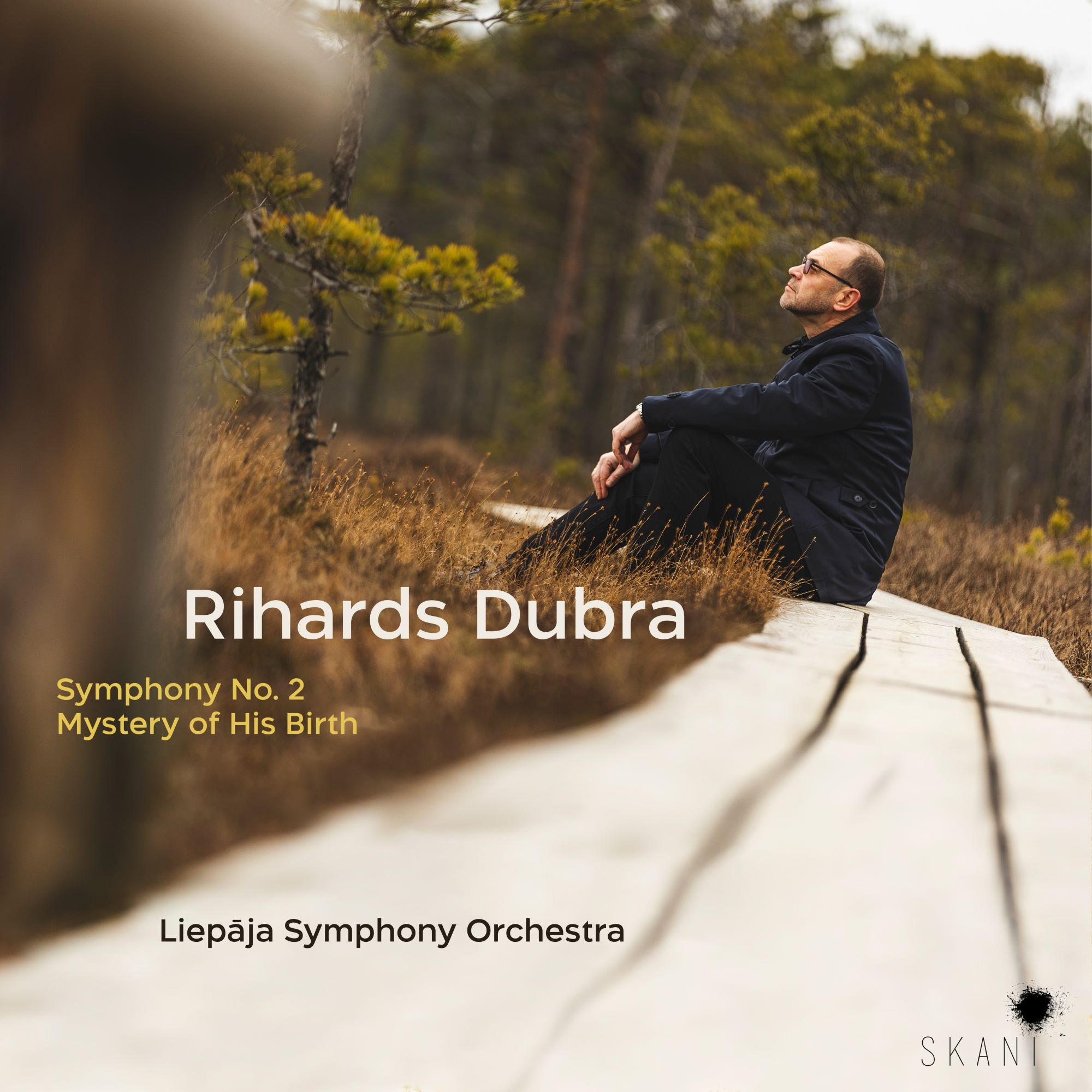"A serious, large-scale symphonic work from the Latvian composer known for his sacred music"
I first came across the music of Latvian composer Rihards Dubra in the early 1990s when I was given a copy of one of his small-scale Latin choral works. Since then, it is for his sacred choral music that the composer has become best known. But a new disc from the Latvian label Skani (an offshoot of the Latvian Music Information Centre) introduces us to Rihards Dubra on a larger scale with performances of his Symphony No. 2 and Mystery of his Birth, for cello and orchestra, performed by the Liepāja Symphony Orchestra, conductor Atvars Lakstigala (the orchestra's chief conductor) with cellist Eriks Kirsfelds. [The disc is released on 8 May 2020].
Dubra's Symphony No. 2 is a large scale work, well over 30 minutes long and written for an orchestra with triple woodwind, four horns, three trumpets, three trombones, tuba, four timpani and percussion players and harp [see the sample score from Musica Baltica]. It is in three movements, 'Visio', 'Cantus', 'Et vidi...'. The interview with the composer in the CD booklet is illuminating when it comes to the composer's general philosophy, but we are given little concrete information about the work itself.
It is a large, serious work and though a secular piece, as with a lot of Dubra's work you sense that the sacred is never far away. Raised a Roman Catholic in Soviet Latvia when such things were if not proscribed then highly restricted, as a musician Dubra has continued to relate to the sacred, not only writing a substantial body of music setting sacred texts, but he was also a founder member of the Schola Cantorum Riga as well as being cantor in church in Riga and singing with a number of other ensembles.
Dubra takes an intense and serious view of the symphony, saying in the CD booklet "I don’t think a symphony should speak about small, everyday things and issues; it should speak of global, fundamental and substantial things. Only then does it justify the name ‘symphony’. It must be something serious." The inspiration behind the work seems to be the Book of Revelation, "If we take the New Testament, Revelation is my favourite book in it. And precisely because it has so much mysticism in it. I really like mysticism as a phenomenon; I like things I cannot immediately explain".
Dubra is very much linked to the Baltic minimalist school, this music is often a long way from minimalism, with complex textures and music which strays a long way from the purely tonal, "Now and then I use the twelve-tone technique, but I use it in this same way, so that the result sounds quite melodic. When I feel like playing around, I try to build a twelve-tone melody so that it doesn’t sound like a twelve-tone melody. I do that with a lot of things."
The symphony is a sober, serious and rather intense piece.
The melodic material often has hints of plainchant about it, but Dubra's treatment of it moves the material away from this inspiration. The first movement 'Visio' starts with a slowly unfolding chant-like melody over an aural sound-scape that is almost filmic, and as this develops the music transforms into something dramatic and dynamic. The film comparison, however, stayed with me and there is a sense of an unfolding, unspoken narrative behind the whole work. The movement between the quieter opening material and the faster more dramatic sections creates much of the work's tension. 'Canto' starts in the same sound-world as the first movement, letting the material slowly unfold against a shimmering background. Dubra describes it as a set of variations, though you tend to perceive the movement as a single whole, slowly building. The final movement, 'Et vidi...' starts in a highly dramatic fashion, but with the same combination of sustained strings, dramatic wind and shimmering percussion; throughout the work's dramatic dynamism, Dubra keeps the sound-world quite consistent. Dubra's love of ostinatos comes through here, piled onto each other to create something vividly dynamic which ends on a radiantly triumphant note. The result is a striking symphonic journey which packs a powerful punch, and which Dubra's manipulation of texture and impetus means that it feels as if all three movements create an over-arching span. A journey indeed.
Mystery of his birth is a single movement work for cello and symphony orchestra, lasting around 11 minutes and here I thought rather of John Tavener's The Protecting Veil as the cello plays a similar role in this music, which is inspired by the mystical events of Christmas Eve. And the work has something of the same mystical rapture, with a high singing cello part and the bells of which Dubra seems to be so very fond.
The Liepāja Symphony Orchestra is Latvia's oldest symphony orchestra with a history dating back to 1883, and this disc was recorded live in Liepāja. The recording is a fine achievement with a spacious sound and a confident feeling of the architecture of the whole piece.
Rihards Dubra's first symphony was written when he was still studying, and I sense that we will have to wait some time for the next one. The music on this disc proves a fascinating intersection between the dramatic and the sacred, with Dubra's sense of symphonic dynamism well to the fore.
Robert Hugill
www.planethugill.com
___________________________________________________________________
"Latvian composer Rihards Dubra (*1946) is primarily active as a teacher and church musician. He has written a corresponding amount of sacred music. For the Second Symphony the composer got inspired by the Book of Revelation and its mysticism. Indeed, the music often sounds mystical and ethereal in the movements Visio and Cantus, while in the third movement, Et Vidi…, it is apocalyptic, so reminiscent that the last book of the New Testament is sometimes called the Apocalypse. Just as the prophetic book was a book of consolation and hope during the persecutions of Christians in the Roman Empire, Dubra lets his symphony end quite positively, although a final gong stroke is to be seen as a kind of warning.
Mystery of His Birth is about the Christmas story and is written for large orchestra and solo cello (soloist: Eriks Kirsfelds).
« The music is like a subdued account of what happened on that wondrous night, » the composer says. The music flows very calmly at first, without becoming transparent because of the bell sounds overlapping the orchestra, while the second part sounds more joyful and Christmassy. Yet, for my feelings, it is over-instrumented and loud. The Symphony No. 2 is much more accessible and impressive.
Both works are well played by the Liepaja Symphony Orchestra."
Remy Franck
www.pizzicato.lu

